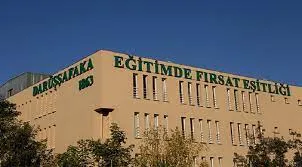Milestones in the history of Darüşşafaka
Founders of Darüşşafaka
Founders of Darüşşafaka
Valide School
Valide School
1863
The association named “Cemiyet-i Tedrisiye-i İslamiye” was founded by Yusuf Ziya Pasha, Gazi Ahmed Muhtar Pasha, Vidinli Huseyin Tevfik Pasha, Sakızlı Ahmet Esat Pasha and Ali Naki Efendi, with the edict of Sultan Abdulaziz Han dated March 30, 1863. Purpose; was to support the education and training of the poor and underdeveloped people. The Association, of which many Ottoman pashas and intellectuals are members, set an example for one of the first civil organizations in the field of education in the history of Turkey.
1865
The aim at the beginning; It was the teaching of apprentices working in and around the Grand Bazaar. The old Valide School building in Beyazıt was repaired and classes started. The school was operating in one classroom.
The Society provided all kinds of teaching tools to those who came to the lectures, and the lecturers did not receive any money. Considered the first public school in Turkey, this “apprentice school” continued its education until 1873.
1867
The Society has published a monthly magazine called Mebahis-i İlmiyye (Scientific Subjects) since 1867. The publication of the journal, which mostly included articles on positive sciences, lasted for several years and was watched by a wide school audience, including the students of the Harbiye Mektebi, which provided the most advanced education of the time.
It has become a common practice that the source and supplementary books prepared for Darüşşafaka students are taught in schools outside of Darüşşafaka.
1868
The construction of the building, designed by the Italian architect Barironi and designed by the chief architect of Dolmabahçe Palace, Ohannes Kalfa, to be built on the land in Fatih, which was purchased with the donation of Sultan Abdülaziz Han, has begun. The school building is the first building designed as an education complex of this size, suitable for the education of girls and boys under the same roof, with facilities far ahead of the times.
1872
In the regulation of the Society dated March 25, 1872, it was stated that "the Society will be based on patriotism and national effort, and its members will consist of individuals who will make efforts in this direction".
The same regulation stipulated that “girls and boys who are not older than ten years old would be admitted to the school under construction, all expenses of the students would be covered by the Society, an administrative and education board should be established, and a principal and a headmistress should be appointed to the school”. (Until Nazima Antel, who served between 1965 and 1973, the school did not have a "mistress", and female students were not accepted until 1971.)
1873
Darüşşafakat'ül İslamiye was founded on June 25, 1873 as a free boarding school with a special status and started education with the first lesson given by Captain Mustafa Efendi on June 28 with 54 students taken at the opening. Although the education and training program was prepared to include primary school (primary school), middle school (secondary school) and high school (high school) programs, it was above the program applied in schools affiliated to the Ministry of Education. The last two years of the school, which is eight years in total, consisted of "ali" classes and its program was prepared according to the college program. For this reason, those who graduated from Darüşşafaka until 1894 were considered college graduates. In addition, the last year was called “Telegraph Science School” and between 1873-1894 the School gained the identity of a “telegraph science school”.
1877-1878
The 1877-1878 Ottoman-Russian War, known as the "93 War", affected education in Darüşşafaka. Thousands of immigrants from the occupied territories came to Istanbul. More than a thousand girls and boys were placed in the Darüşşafaka building by the Society. Over time, some of them were sent to other places, and the fatherless and motherless boys were taken to the School. The school has returned to its original function. Under these conditions, classes could not be held in some classes for up to six months (since the teachers, who were mostly officers, went to the front).
1879
Upon the decision of the Council of Ministers to transform Mekteb-i Mülkiye into a college, II. With the report submitted to Abdülhamit, it was suggested that the Darüşşafaka building be given to the Mekteb-i Mülkiye. In the will sent by the Sultan to the government, it was stated that "Darüşşafaka was established to provide education and training for Muslim orphans with the help of benevolent people, and there were more than 200 poor children in the school day and night" and this idea was ordered to be abandoned.
1881
Darüşşafaka gave its first graduates. Eight people, who were the first graduates of the school, were taken to the Ministry with the efforts of the Post and Telegraph Minister İzzet Efendi, a member of the Society. At this time, the school enrollment was 125.
1882
Until this date, there was no other high school (high school) in the country, apart from Darüşşafaka, Galatasaray and military high schools. In the 1880s and until the mid-1900s, many distinguished and famous people of the time took honorary duties as teachers at Darüşşafaka. Homeland poet Namık Kemal, Manyasizade Mustafa Refik Bey, Babanzade Naim Bey, Composer Zekai Efendi, Ahmet Mithat Efendi, Painter Agah Efendi , Selim Sırrı (Tarcan), poet Yahya Kemal (Beyatlı), historian Yusuf Akçura, Tahir Olgun, Painter Ali Rıza Hoca were among them. In addition, mathematician Salih Zeki, mathematician Mehmet İzzet, financer Hasan Ferit, man of letters Ah.


https://www.darussafaka.org/hakkimizda/cemiyet/tarihce
https://www.darussafaka.org/bagis?c=bayram-bagisi